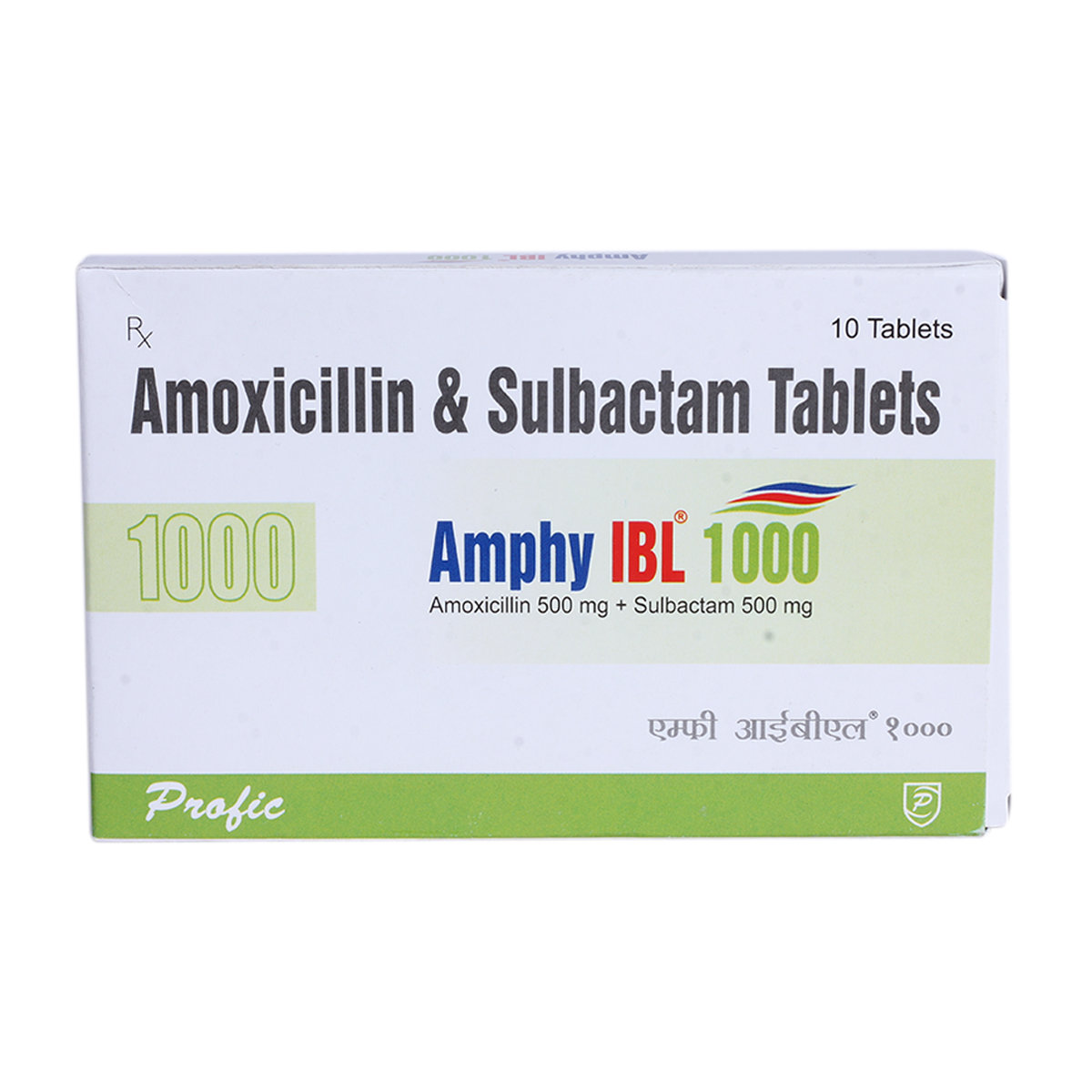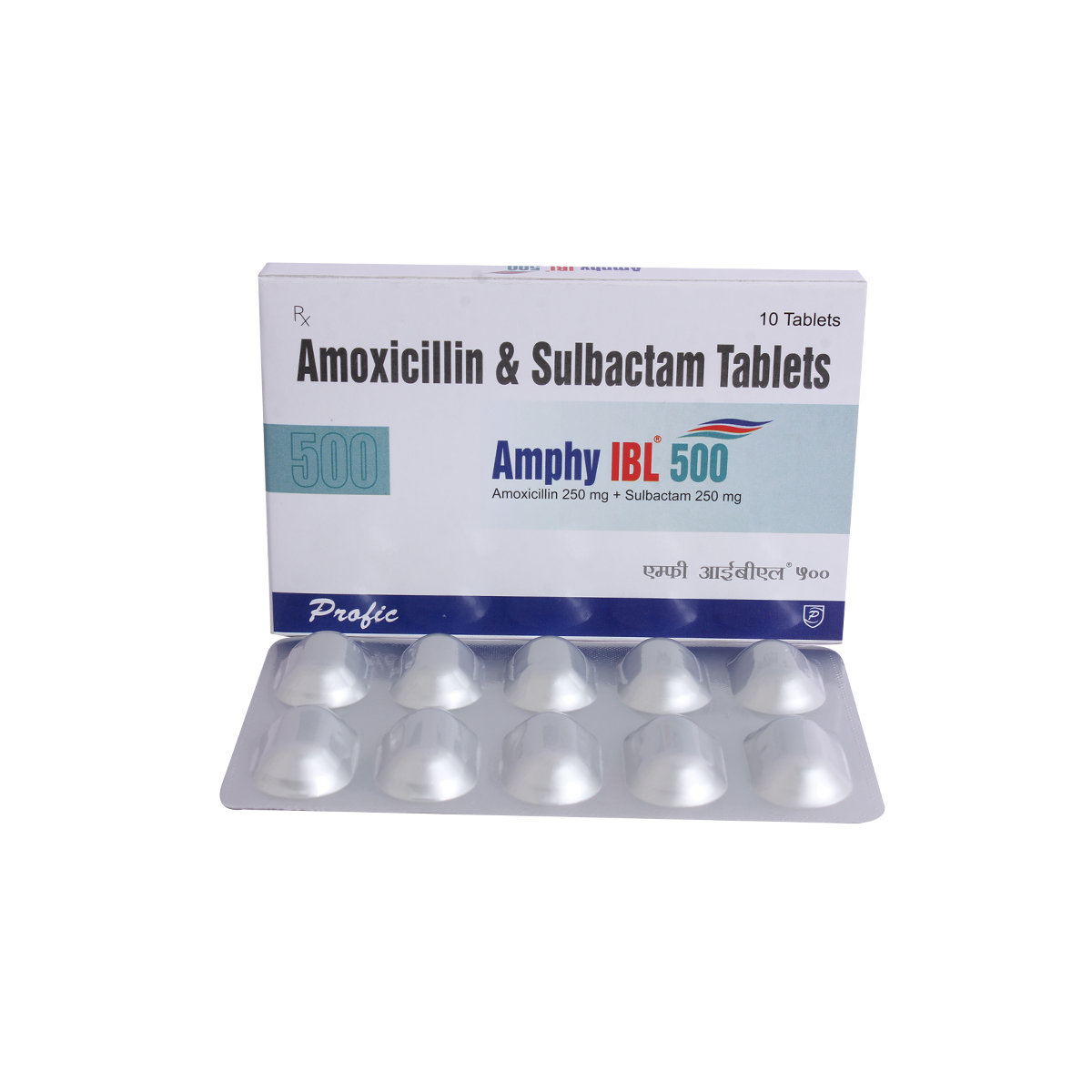Amoxycillin+sulbactam
About Amoxycillin+sulbactam
Amoxycillin+sulbactam belongs to the group of medications called antibiotics used to treat bacterial infections. Bacterial infections are caused by the multiplication of harmful bacteria inside or on the body. These harmful bacteria produce chemicals known as toxins, which can damage tissue and make you sick. Symptoms of bacterial infection vary depending on the organ affected by bacteria.
Amoxycillin+sulbactam contains Amoxycillin and Sulbactam. Amoxycillin is a type of antibiotic. It works by preventing the formation of the bacterial protective covering, which is required for bacterial survival. Sulbactam is a beta-lactamase inhibitor that reduces resistance and improves Amoxycillin's antibacterial activity.
You should take this medicine exactly as prescribed by the doctor. The common side-effects of Amoxycillin+sulbactam are diarrhoea, nausea, and vomiting. These side-effects are usually mild and temporary. However, if any of these side effects persist or get worse, inform your doctor immediately.
Do not discontinue or abruptly stop the medication as it may lead to antibiotic resistance, a condition in which bacteria become resistant to antibiotics. Amoxycillin+sulbactam should be used with caution in children, pregnant women, breastfeeding mothers and elderly people. It is not known whether Amoxycillin+sulbactam interacts with alcohol or if it may affect your ability to drive. So, please discuss with your doctor the possible risks and benefits before consuming alcohol with Amoxycillin+sulbactam.
Uses of Amoxycillin+sulbactam
Medicinal Benefits
Amoxycillin+sulbactam contains Amoxycillin and Sulbactam. Amoxycillin is a penicillin antibiotic and treats the infection by killing the bacteria. Sulbactam is a beta-lactamase (an enzyme produced by bacteria that can destroy antibiotic) inhibitor and prevents the destruction of Amoxycillin from the bacteria. Amoxycillin+sulbactam has broad-spectrum activity and is effective against both gram-positive and gram-negative bacteria. It is used to treat bacterial infections such as skin infections, gynaecological infections and intra-abdominal infections.
Directions for Use
Storage
Side Effects of Amoxycillin+sulbactam
- Diarrhea
- Nausea
- Vomiting
Drug Warnings
It is not recommended to take Amoxycillin+sulbactam if you are allergic to penicillin, other antibiotics, or this medicine's contents. Amoxycillin+sulbactam should not be given to people with infectious mononucleosis (viral infection with sore throat and fever) and colitis (intestine inflammation). Amoxycillin+sulbactam should be used with caution in patients with kidney impairment. Do not discontinue or abruptly stop the medication as it may lead to antibiotic resistance, a condition in which bacteria become resistant to antibiotics. Amoxycillin+sulbactam should be used with caution in children, pregnant women, breastfeeding mothers and elderly people. It is not known whether Amoxycillin+sulbactam interacts with alcohol or if it may affect your ability to drive. So, please discuss with your doctor the possible risks and benefits before taking alcohol along with Amoxycillin+sulbactam.
Drug Interactions
Drug-Drug Interactions: Amoxycillin+sulbactam may have interaction with aminoglycosides (gentamicin), blood thinner (warfarin), anti-rheumatic(methotrexate).
Drug-Food Interactions: Alcohol may increase the side effects of Amoxycillin+sulbactam. Hence, it is advised to limit the intake of alcohol while using Amoxycillin+sulbactam.
Drug-Disease Interactions: Amoxycillin+sulbactam may have interaction with disease conditions such as colitis (inflammation in the intestine's lining), mononucleosis (viral infection with sore throat and fever), and severe kidney impairment.
Drug-Drug Interactions Checker List:
Safety Advice

Alcohol
cautionIt is not known whether it is safe to consume alcohol with Amoxycillin+sulbactam. However, as a precautionary measure, it is advisable not to take or limit alcohol.

Pregnancy
cautionPlease consult the doctor, your doctor will weigh the benefits and any potential risks before prescribing Amoxycillin+sulbactam.

Breast Feeding
cautionThere is no substantial research yet on the use of Amoxycillin+sulbactam in breastfeeding/nursing mothers. Please consult a doctor.

Driving
cautionIt is not known whether Amoxycillin+sulbactam alters your ability to drive. Do not drive or operate machinery if you experience any symptoms that affect your ability to concentrate and react. Seek medical attention if the symptoms persist longer.

Liver
cautionAmoxycillin+sulbactam should be used with caution in patients with liver diseases as it may affect liver function. The dose may have to be adjusted by your doctor. Please consult the doctor.

Kidney
cautionAmoxycillin+sulbactam should be used with caution in patients with kidney diseases. Please consult the doctor, your doctor will weigh the benefits and any potential risks before prescribing Amoxycillin+sulbactam.

Children
cautionAmoxycillin+sulbactam should be used in children only if clinically needed. The doctor may have to adjust the dose based on age, body weight and medical history.
Habit Forming
Diet & Lifestyle Advise
- Taking probiotics after antibiotic treatment can reduce the risk of antibiotic-associated diarrhoea. Certain fermented foods like yoghurt, cheese, sauerkraut, kombucha, and kimchi can help restore the intestine's good bacteria.
- Include more fibre enriched food in your diet, as it can be easily digested by your gut bacteria, which helps stimulate their growth. Thus, fibre rich foods may help restore healthy gut bacteria after a course of antibiotics. Whole grains like whole-grain bread, brown rice should be included in your diet.
- Avoid alcoholic beverages with Amoxycillin+sulbactam as it can make you dehydrated and may affect your sleep. This can make it harder for your body to aid Amoxycillin+sulbactam in fighting off infections.
Special Advise
- On prolonged therapy, monitoring renal, hepatic, and hematologic functions periodically is advised. Monitor also for signs of anaphylaxis during the first dose.
- Even if you feel better after taking Amoxycillin+sulbactam, do not stop taking it until your doctor says so. This might cause the symptoms to reappear and make the infection difficult to treat due to antibiotic resistance.
Patients Concern
Disease/Condition Glossary
Bacterial infections: A bacterial infection is a condition in which harmful bacteria enter, multiply and infect the body. It can target any organ of the body and multiply very quickly. Many bacteria give off chemicals called toxins, which can damage tissue and make you sick. Bacterial infections vary from minor illnesses (like sore throat and ear infections) to severe brain infections (like meningitis and encephalitis). When infected with bacteria, you can experience generalized symptoms, like fevers, chills and fatigue. Few harmful bacteria that commonly cause infections include Streptococcus, Staphylococcus and E. coli. Anyone can get a bacterial infection, but people with a weak immune system or taking immunosuppressive medicines like steroids are more prone to infections.
FAQs
Amoxycillin+sulbactam contains Amoxycillin and Sulbactam. Amoxycillin reduces the infection by inhibiting bacterial growth. It disrupts the cell wall formation (outer layer), which is essential for bacteria's survival. Sulbactam inhibits the action of beta-lactamase, an enzyme produced by the bacteria to destroy antibiotics.
No, it is a prescribed drug given by a physician for preventing specific medical conditions. Taking it on your own can cause unwanted side effects.
Amoxycillin+sulbactam is safe if used in the dose and duration recommended by your doctor. Take it precisely as directed, and do not skip any dose. Follow your doctor's guidelines carefully and inform your doctor if any of the side effects disturb you.
Take the missed dose as soon as possible. However, skip the missed dose and return to your regular dosing schedule if it is time for the next dose. Do not take a double dose to make up for the dose that you missed.
Do not stop using Amoxycillin+sulbactam even if you feel better. It should be strictly used as advised by your doctor to avoid the recurrence of symptoms and to worsening of the disease.
Amoxycillin+sulbactam should not be given to the people with infectious mononucleosis (viral infection with sore throat and fever) and colitis (inflammation of the intestine) as Amoxycillin+sulbactam may worsen these conditions.
Amoxycillin+sulbactam may cause diarrhoea, so notify your doctor immediately if you develop watery and bloody stools with or without stomach cramps or fever.








